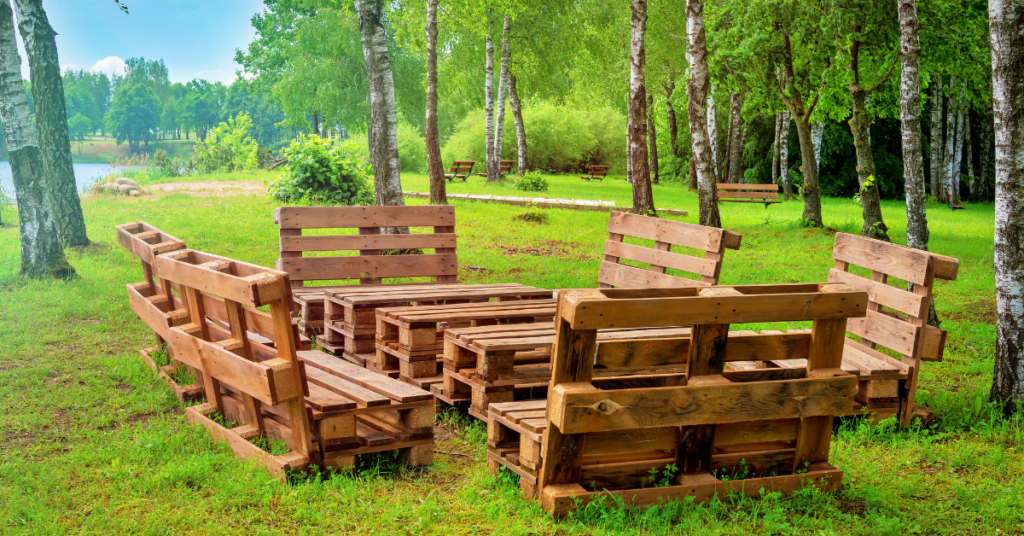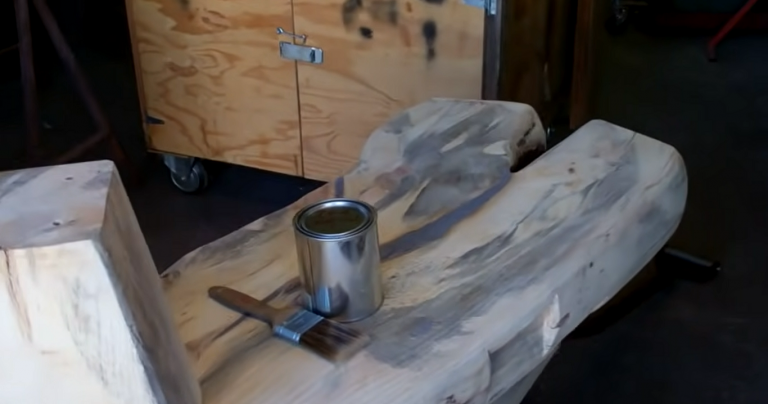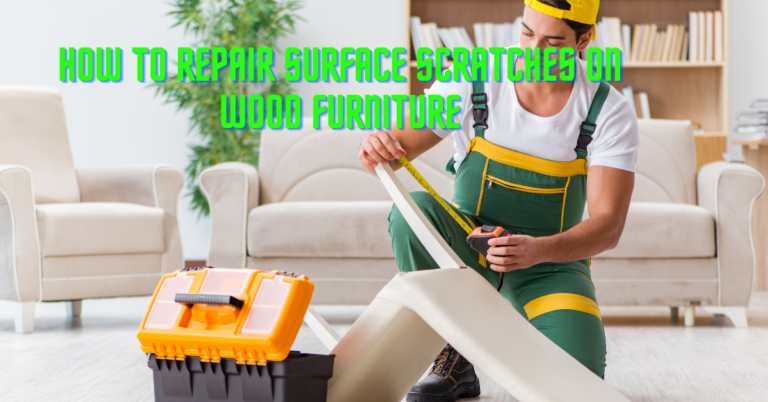Sealing outdoor wood furniture: A complete Guide
Having your favorite chair out on the porch where you sip on your coffee every morning sounds bliss, and outdoor wooden furniture helps us enjoy the different shades of the beautiful weather. Over time they tend to warp, rot and crack due to exposure to excess sunlight, moisture, rain, UV light, and other environmental conditions.
Perhaps you’ve been wondering how to preserve your wooden furniture; then I guess you’re at the right place! Sealing outdoor wood furniture has proven to be an effective way of protecting and making your wood weatherproof.
There are different sealants, ranging from the well-renowned linseed and Tung oil to lacquer, varnish, paint, and polyurethane. These products seal outdoor wood furniture by adhering firmly to the surface of the wood and forming a protective coating over the wood.
This article contains detailed information about different sealants and explanatory guidelines on the various methods of application.
All at a Glance
Why seal outdoor wood furniture?
Outdoor furniture gets easily weathered due to the continuous exposure to rain, moisture, sunlight, and UV light. Sealing outdoor wood furniture is essential as it helps to improve the durability and quality of your wood. Applying a few coats of sealant or paint will help preserve your wood and enhance its coloration for a bit longer.
How to seal outdoor wood furniture
To duly protect your wood from moisture, excessive sunlight, and wood-infesting bacteria, it is advisable to seal your wood. There are various ways of protecting your outdoor wood furniture, but we’ll discuss four methods which are;
- Use of either tung or linseed oil
- Use of polyurethane, varnish, or lacquer
- Use of stain-sealant
- Use of paint
Each of these methods has proven effective for actively sealing the wood and making them weatherproof, long-lasting, and looking good as new.
1. Use of either tung or linseed oil
Over the years, tung and linseed oil has been used to make a hand-rubbed oil finish over wood surfaces. Linseed oil is extracted from the seeds of a flax plant, while tung oil is of Chinese descent as it is gotten from the tung tree and is most suitable for dark-grained woods.
Although ordinary tung oil takes time to dry and has a tacky nature, it has recently been modified by mixing the oil with other materials that’ll hasten its curing time.
Step one: Clean your wood.
Before deciding to seal your outdoor wood furniture, it is essential to clean your wood by dusting the wood and making sure it’s free from all forms of dirt and grime. After that, you can make use of fine-grit sandpaper to gently sand the wood and then clean it once you’re done.
Step two: Get your mixed solution.

Mixing your solution is not all hard, awesome, right? First off, get a bucket and then pour one part oil of either boiled linseed or tung oil, add one part of mineral spirits and one part polyurethane and thoroughly mix it.
To get a thicker solution, reduce the quantity of mineral spirits in the solution, and perhaps you’re worried about the solution drying out before you’re done; not to worry, you can reduce the portion of polyurethane.
On the other side, add more polyurethane to the mixture to speed up the drying time. You can get the premixed solution of either tung or linseed oil to save yourself stress.
Step three: Apply
Would you please make use of a natural bristle paintbrush to apply it over the wood’s surface lightly? Allow the oil to seep into the wood and apply more over the dry surfaces.
Get a clean rag and wipe off excess oil from the wood.
Step four: Leave it to dry
please leave it to dry totally, and this may take a few hours, but it is more advisable to leave it overnight.
Step five: sand
using fine-grit sandpaper, lightly sand the surface of the deck, clean off the dust and then reapply oil where necessary and then leave to dry.
2. Use of polyurethane, varnish, or lacquer
Polyurethane, varnish, and lacquer are very efficient and reliable for waterproofing ability. They bond to the surface of the wood and eventually prevent water or moisture from seeping into the wood. You can choose any application method, be it a brush or sprayer.
There are a few things you need to know about each of the sealants you’re about to use. Lacquer is made up of solubilized tree resin in alcohol. It is most suitable for furniture and dark-grained woods because the coat gives a yellow coloration over time, which eventually discolors the wood.
Still, it is an effective sealant, and frequently lacquer thinner is used to reduce its thickness depending on your texture preference. When working with lacquer, multiple light coats is most preferable for the wood surface.
The varnish contains solvent, drying oil, and resin. It is best for outdoor furniture because it gives a thick coating that doesn’t turn yellow over time, which means it can be used on both dark and light-grained wood. Marine varnish is highly effective for outdoor wood. Varnish is the perfect pick for your wood if you want to maintain your furniture’s natural look while remaining sealed and waterproofed.
Lastly, polyurethane is made up of acrylic and polyurethane resins which don’t yellow over time after being applied on the surface of the wood. Regardless, you can choose any three sealants to be waterproof and protect your furniture.
The following steps are well outlined to guide you to apply varnish on wood rightly.
Step one: Clean your wood.
Before deciding to work on your wood, it’s essential to clean your wood by dusting it and making sure it’s free from all forms of dirt. Then use fine-grit sandpaper for sanding the wood gently, and then clean with a rag once you’re done.
Step two: Apply
Before applying, be careful not to shake or abruptly stir the sealant, as it’ll firm bubbles that might eventually settle on the coats even after it cures. Apply your desired coat on the surface of the wood, either using a brush or a sprayer. Make sure the coats are even.
Step three: Leave it to dry
Please leave it to dry totally, which ranges from a few minutes to hours, but ensure the wood is in a well-ventilated area.
Step four: Resand and Recoat
Using fine-grit sandpaper, lightly sand the surface of the wood, clean off the dust and then reapply the sealant where necessary and then leave to dry.
3. Use of stain-sealant
High-quality stain sealant is suitable for your outdoor wooden furniture such as coffee tables, chairs, and porch. It’s a dual-purpose sealant. Amazing right? Definitel
y yes! It waterproofs the surface of the wood and also gives color. I’m sure you’re wondering how that is. They contain chemical components such as color pigments and attachers that can either be oil, alkyd, or water-based They will need to be reapplied every one or two years.
Sealants also function so that they protect your wood from external moisture, most especially water sealers. For areas with a high amount of rainfall and humidity, it’s advisable to use water sealers because they allow the wood from within to dry fast, thereby preventing the wood from rotting and warping.
The following steps are carefully outlined to guide you in applying sealants to your outdoor furniture.
Step one: Clean your wood.
Before deciding to work on your wood, it’s essential to clean your wood by dusting it and making sure it’s free from all forms of dirt and grime. Then use fine-grit sandpaper for sanding the wood and cleaning once you’re done gently.
Step two: Apply
Gently apply the stain sealant over the entire expanse of the wood surface. Please leave it to seep into the wood and carefully clean off the excess.
Step three: leave to dry.
4. Use of paint
The use of paint is also an effective way of sealing outdoor wood furniture, as it protects the wood from extreme weather conditions. Latex paint is more advisable to use than oil-based paint as it’ll last longer, which means you won’t necessarily have to touch it up often.
Although you need to take note that using paint won’t maintain the natural look of your wood, regardless, it’ll seal your wood and make it more durable.
You can get latex paint at any close DIY store around you, and once that is done, all you have to do is read the manufacturer’s guidelines, get a paintbrush and start painting till you have your furniture looking nice and lovely.
Protecting your outdoor wood before and after sealing

Outdoor furniture is an effective way of protecting them from damage, but the way they’re handled after sealing is also essential. There are a few things that can be done to ensure your wood lasts longer, some of which are outlined below;
- Choose the suitable method of sealing your wood
Some of your outdoor furniture is initially interiors, and often the wood used is not meant to withstand harsh weather conditions, which is why we chose to seal in the first place. It’s an excellent choice to seal, but it’s been terminated to choose the right method of sealing your wood.
It is essential to know the best sealant that works for your wood. For example, lacquer works best for dark-grained wood because it yellows over time. I’m sure you don’t want your light-colored woodturning yellow. Nobody loves that.
To maintain the natural look of your wood, you can apply coats of varnish that have added UV blockers; this will help protect your wood from sunlight while preserving its natural look. Always ensure the sealant you intend to use guarantees the protection you want for your wood.
- Always clean and sand your wood first
Before applying any sealant on your wood, always make sure the surface of the wood is clean, and afterward, sand the entire surface till it’s clean and even. It’ll make the sealants adhere firmly to the surface of the wooden furniture.
After sealing, clean your wood once in a while using a wood soap and a clean rag. This will help get rid of mold or any fungal agent that might want to infest your furniture. After cleaning, always place it in the shade to allow it to dry out.
- Top up the coats regularly
After a while, the surface coatings tend to wear off, and adding a few coats on the surface every year will help keep your furniture in shape.
- Keep away when not in use
You can’t leave your furniture outside to wither during the rainy weather or winter. You can keep them away in the garage when they’re not in use.
Use of lemon oil
Lemon oil is a natural agent that helps to moisturize your wood and prevent it from drying out. After an extended period, wooden furniture is prone to cracks and splits due to constant exposure to sunlight and fluctuating weather.
But soaking a cloth in lemon oil and thoroughly rubbing it on your wooden furniture will leave them good as new!
Pro-tips
- When working with sealants, especially lacquer, it is advisable to work in a well-ventilated area to avoid choking hazards.
- It’s essential to clean up the wood before working on it.
- Know the most suitable sealer for your furniture.
- Lacquer thinner can be used to lighten the thickness of lacquer.
- Always sand the surface of your wood before applying sealant. This will make it adhere firmly to the wood.
- Keep your outdoor furniture away in a safe place when they’re not in use, and covering them with clean clothes will prevent dust from accumulating and damaging the wood.
- Clean your furniture regularly, and you can use a wood soap that can be gotten from any hardware store.
- Always read the manufacturer’s guidelines and instructions before applying.
- Always recoat the surface of your wood regularly.
Conclusion – Sealing outdoor wood furniture: A complete Guide
Wood is easily prone to cracks, rot and warping as it gets exposed to excess sunlight and moisture, so it is essential to seal outdoor furniture. Before applying any sealant, it is necessary to know the most suitable adhesive for your wood. This will enhance the sealant’s efficiency and increase the durability of your furniture.
The various methods of applying sealants have been outlined, and all you have to do is follow the guidelines, get your furniture and start sealing onto the new look!
Important Reads:







